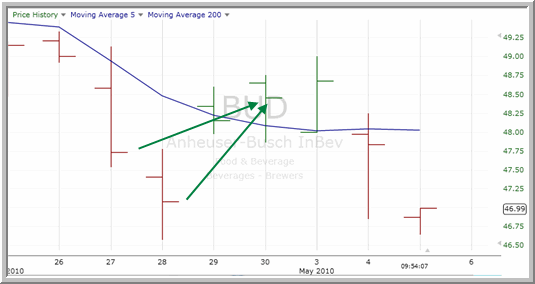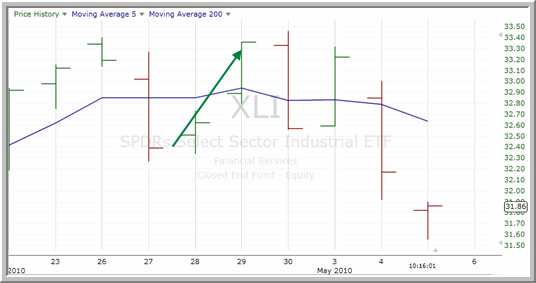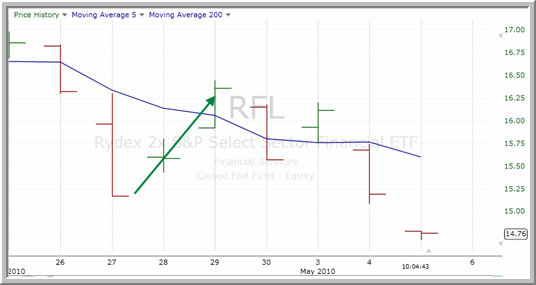High Probability Trading Report: Data-Driven Trading and Proper Exit Strategies
In the wake of the sizable sell-off on Tuesday, the number of stocks and exchange-traded funds (ETFs) sliding into or at least toward oversold territory has increased dramatically. So far in trading we are seeing many of those markets open significantly lower – the ^FAS^ for example, opened off more than 5% and has recouped about half of that decline. A similar plunge and rally has taken place in other ETFs like the ^SSO^.
Today, however, I want to focus on the relationship between what Larry Connors calls “data-driven trading” and proper exit strategies for high probability trading. This is important for short term traders who trade both high probability trading strategies for stocks and high probability trading strategies for ETFs and leveraged ETFs.
High probability traders enter and exit positions based on specific criteria. Whether that criteria comes from the strategies in books like Larry’s Short Term Trading Strategies That Work or from resources like our High Probability ETF Trading Software (click here to start your free trial), this is what guides high probability traders looking to find the best stocks and ETFs to trade everyday.

Above, traders who picked up shares of a very oversold ^BUD^ were able to lock in gains two days later, before the market reversed back to the downside.
This is also what we mean by the role of data-driven decisions in trading and the power of data-driven trading. While many traders wonder when to get into a position, whether to add to a position, when to lock in gains or cut losses, traders using high probability trading strategies never have these questions. As data-driven traders, high probability traders focus on the facts, not the news, not the rumors, not the fears and anxieties in the financial media. Just the facts ma’am.
Here’s an example of how this can play out in a trade when it comes to exit strategies. Many traders who are new to high probability trading sometimes become frustrated when high probability rules call for exit positions that often continue to advance. “Why can’t I stick around in the trade a little longer?” goes the complaint. “Look at how much money I left on the table?”

Above, an example of a timely exit in the ^XLI^ helped high probability ETF traders lock in gains in this fund before it began selling off late last week.
I have included throughout today’s report examples of recent pullbacks in stocks and exchange-traded funds. Note that shortly after many of these markets rallied into strength and provided exit signals for high probability traders trading them – either by closing above the 5-day moving average or closing in overbought territory – they reversed back to the downside.
Data-driven high probability traders were able to follow the exit strategy, take their gains and move on to the next trade. Traders who were not disciplined and not focused on what the data was telling them (i.e., that these markets were no longer oversold and no longer had a significant trading edge) and tried to stick around for further gains were in many instances disappointed in their decision.
Below, timely exits in when trading leveraged ETFs can make the difference between a winning trade and a non-winning trade. Here, a bounce into overbought territory was the signal that alerted traders in the ^RFL^ that it was time to take profits.

Part of TradingMarkets’ goal of making great traders involves exposing traders to the strategies, resources and tools of some of the most successful traders in history. And in our opinion, behind every great trader is great trading decision-making. And more often than not, that decision-making is driven by data.
Want to learn more about what data-driven trading can do for you and your short term trading business? Click here to launch your free, 7-day trial to our High Probability ETF Trading Software.
David Penn is Editor in Chief at TradingMarkets.com.
